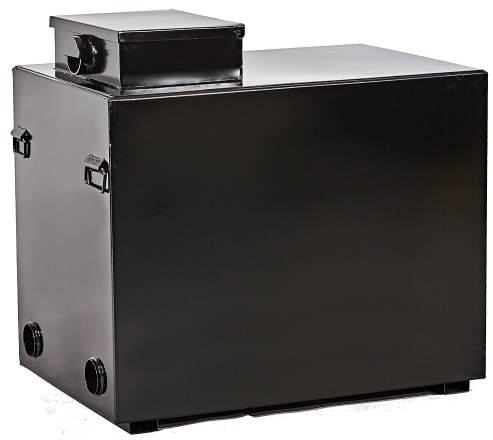
4 Tips for Buying UCO Containers
You call your supplier and ask to buy used cooking oil containers. They used to cost $X and now they cost 50% more plus double the shipping AND your supplier says it will take 6 months to deliver them. You signed a new client yesterday and said you’d drop off a container next week. What do you do?
Outdoor UCO containers, which restaurants use to store their used grease or used cooking oil, have succumbed to the mysteries of the supply chain. Can’t find UCO containers at a reasonable price, let alone at all? Yup, supply chain issue.
UCO containers represent one of the largest expenses for a UCO collector, followed by trucks and staff. (There are supply chain issues with trucks and staff as well.) If you can’t provide a restaurant with an oil receptacle, you can’t collect the grease from them.
Attaining storage tanks and getting them deployed to new customers at a reasonable cost is a major problem for UCO collectors but there are steps you can take to mitigate the cost and availability issues.
1. Buy UCO Tanks in Bulk and Store Them
The DELIVERY of the containers can be nearly as big of a cost as the containers themselves in some cases.
Buying UCO containers in Bulk reduces costs in multiple ways. While you do generally get a discount on the tanks when you purchase more, the BIG savings come in reduced delivery costs to you. If you can afford (or obtain financing for) entire truckloads or railcars worth of containers, the shipping cost will generally fall dramatically. In some cases, you can ship small quantities of containers effectively using LTL broker services and websites, but when you book the entire truck or railcar, the chances are you are getting about the best deal possible. Choosing stackable containers can also lower costs.
2. Strategically Place the Containers You Have
If the customer will allow it, start with less expensive containers (such as barrels) at new accounts of questionable quality. If, after a couple collection cycles the account is producing well you can always come back around and drop a larger and more secure tank.
To prevent theft many UCO collectors use lockable, heavy gauge steel containers for storage. But if the storage area is indoors or in a locked area outdoors you can use plastic containers which are cheaper and more readily available
3. Match the Grease Container Size to the Volume Stored
Do you grab a container and drop it in place and never look back? If your 350-gallon tank is averaging only 75 gallons a month in oil volume, you may be overspending on storage containers. Match the large tank to customers who produce large quantities and match smaller tanks with smaller customers. Reiter’s COST software can help you do that with customized reports and its fill rate tracking feature. Look at your records and see how much is going in and at what rate and you can better match the tank to the waste oil dumped. Move containers between accounts so that higher producing accounts end up with larger containers, smaller producers end up with smaller containers, and everyone is “the right amount full” when your truck is in the neighborhood.
4. Repurpose Similar Used Containers
If someone on your team is a good welder, some storage tanks previously used for other substances can be repurposed into UCO storage containers. It’s a bit of a risk but it can be done.
Some have used decommissioned propane tanks for this. The big, old, heavy wall ones are sometimes even heavy enough to form the basis of “bear proof” container offerings.
Continue Reading
Blog Archive / Biofuel Subsidies: What UCO Collectors Need to Know
 Route
Route